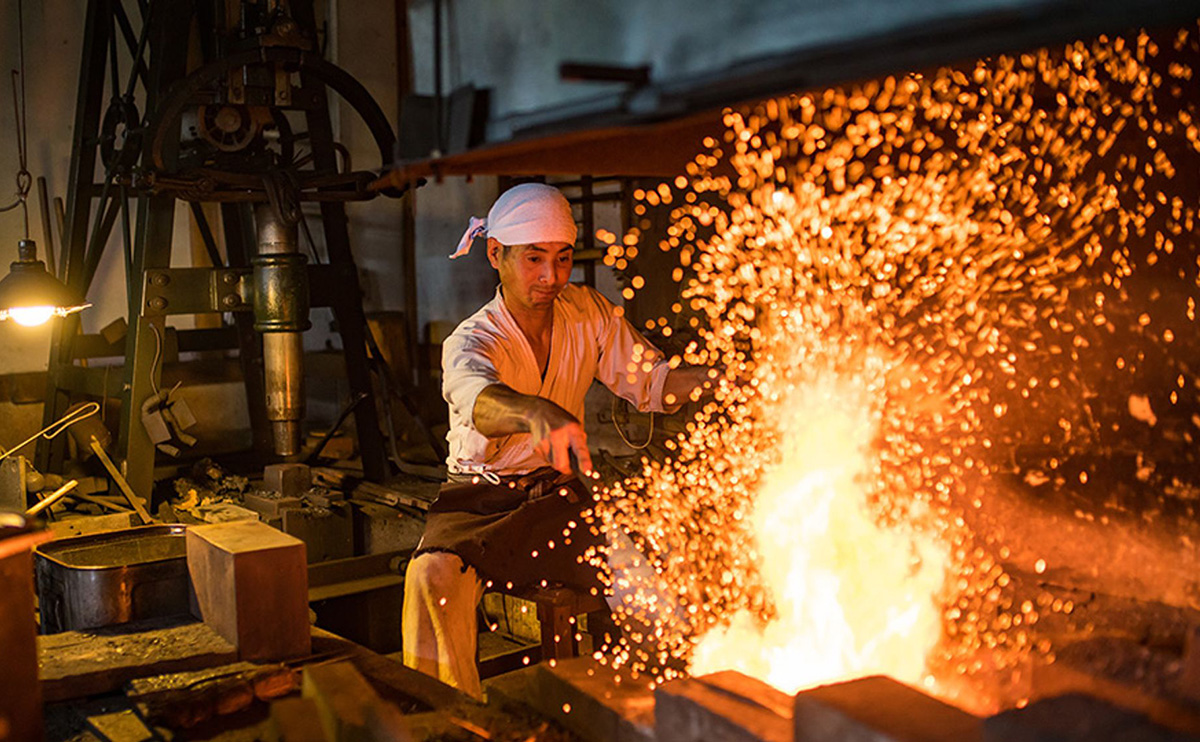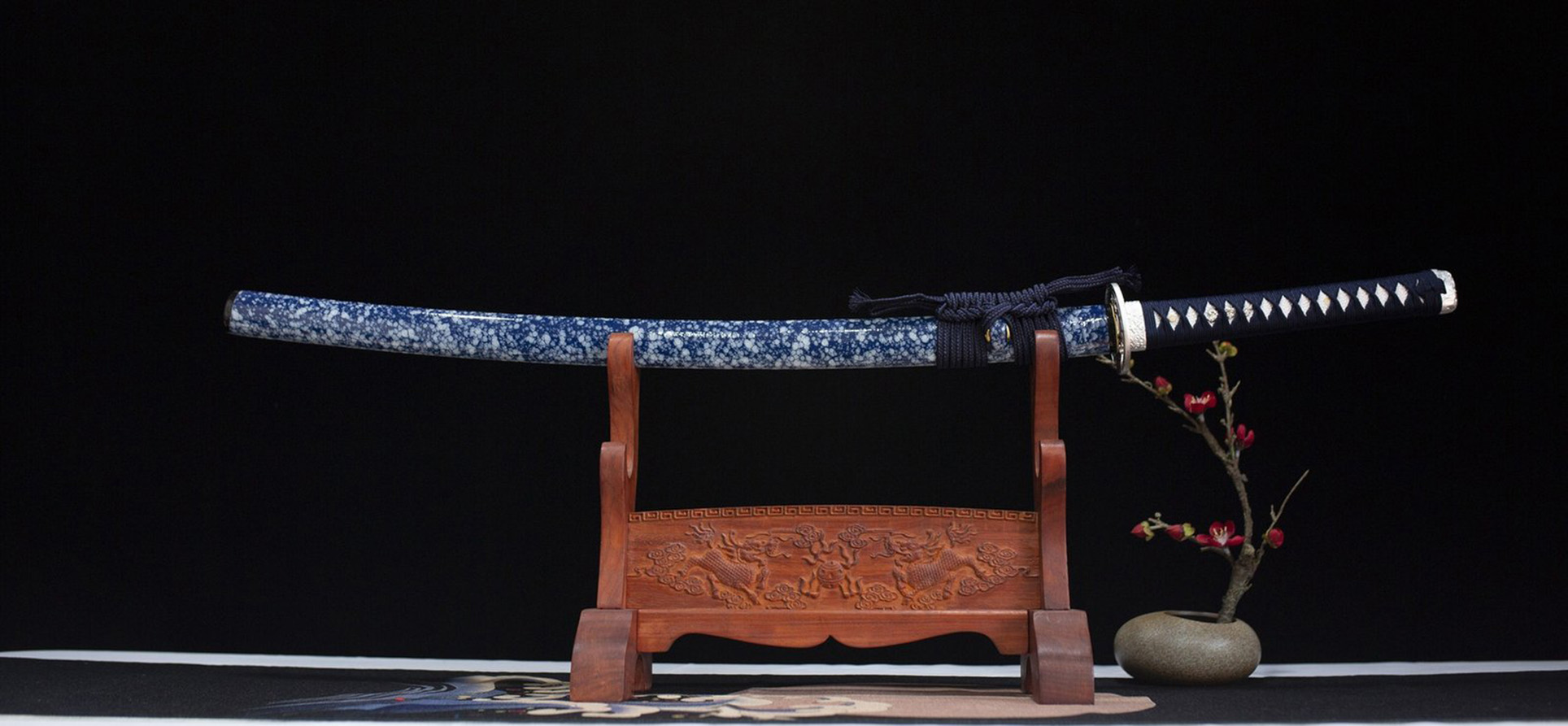Blog
Exploring the Timeless Craft of Japanese Katana

Table of Contents
- The Essence of the Japanese Katana
- Historical Periods of Swordmaking
- Koto Era (pre-1596)
- Shinto Era (1596–1780)
- Shinshinto Era (1781–1876)
- Gendaito Era (1876–present)
- Masamune: The Father of the Japanese Sword
- Other Legendary Swordsmiths of the Koto Era
- Muramasa
- Yamato no Kami Yasusada
- Goto Kaji Tadahiro
- Shinto and Shinshinto Masters: Refinement and Revival
- Nagashige (Shinto)
- Yasutsune (Shinshinto)
- Modern Katana Artisans: Balancing Tradition and Innovation
- Amos Harada
- Smiths of Bizen Osafune Tradition
- Tadashi Nagayama
- The Forging Process: From Tamahagane to Finished Blade
- Caring for a True Japanese Katana
- Collecting and Investing in Legendary Blades
- Conclusion: The Living Legacy of Japan’s Swordsmiths
1. The Essence of the Japanese Katana
Japanese swords—particularly the katana—are renowned worldwide for their unparalleled beauty, razor-sharp edge, and storied history. Behind every magnificent blade stands a master swordsmith, whose centuries-old techniques and keen artistry transform raw steel into a living work of art. In this comprehensive exploration, we delve into the lives, legacies, and techniques of the most celebrated Japanese swordsmiths—from legendary figures such as Masamune to today’s modern katana artisans. We’ll uncover how these samurai sword makers shaped the course of Japanese blade culture and why their swords continue to captivate collectors, martial artists, and historians alike.
2. Historical Periods of Swordmaking
Over the course of Japanese history, swordmakers developed distinctive styles, techniques, and regional schools. Broadly, historians classify Japanese swordmaking into four major eras.
2.1 Koto Era (pre-1596)
The Koto (“old swords”) period spans roughly from the late Heian (794–1185) through the Muromachi (1336–1573) eras. This age produced some of the most revered blades in history, renowned for their robust forging, intricate hamon, and enduring edge retention. Legendary smiths like Masamune and Muramasa worked during this golden age.
2.2 Shinto Era (1596–1780)
Following a brief decline in warfare under the Azuchi–Momoyama period, the Shinto (“new swords”) period ushered in a revival of swordmaking artistry. Swordsmiths in this era refined forging techniques, standardized blade shapes, and introduced new hamon patterns, catering more to ceremonial needs as Japan entered a prolonged era of peace under the Tokugawa shogunate.
2.3 Shinshinto Era (1781–1876)
As interest in koto swords surged among collectors, the Shinshinto (“new, new swords”) period saw smiths actively study and emulate the Koto masters. Innovations included advanced differential hardening and stylish mounts, but the essence remained a tribute to the classic blades of Masamune’s lineage.
2.4 Gendaito Era (1876–present)
With the Meiji Restoration came sweeping reforms, including a ban on carrying swords in public. However, the 20th century witnessed a resurgence of interest in traditional swordmaking. Today’s modern katana artisans carry on the flame, blending time-honored methods with contemporary metallurgy and scientific precision to create blades worthy of the samurai legacy.
3. Masamune: The Father of the Japanese Sword
No discussion of famous swordsmiths can ignore Gorō Nyūdō Masamune (c. 1264–1343), widely regarded as Japan’s greatest blade maker. Working in Sagami Province (modern Kanagawa Prefecture), Masamune’s swords are distinguished by:
- Purity of Steel: His tamahagane (traditional Japanese steel) boasted minimal impurities, yielding a brilliant, silver-white jihada (grain pattern).
- Elegant Hamon: Nie-rich choji-midare hamon with crystalline martensite “drops” that sparkle like fresh snow.
- Balanced Geometry: Perfected subtle curvature (sori) and kissaki (tip geometry) for optimal cutting performance.
- Living Legacy: Surviving Masamune blades (e.g., “Honjo Masamune,” now lost) fuel modern collector demand.
His techniques shaped generations of smiths, influencing Shinto and Shinshinto masters alike.
4. Other Legendary Swordsmiths of the Koto Era
4.1 Muramasa
Active around 1500 in Mino Province, Muramasa Sengo’s blades are famed for:
- Fierce Temper Lines: Straight suguha hamon with dynamic attachments.
- Sharpness & Folklore: Reputation for bloodlust and “cursed” swords.
- Cultural Impact: Highly prized today for their lethal edge and striking hamon.
4.2 Yamato no Kami Yasusada
From Yamato Province, Yasutsuna crafted broad, sturdy tachi suited for cavalry:
- Wide Shinogi-zukuri: Pronounced ridge enhancing strength.
- Nioi-based Hamon: Mist-like temper lines optimized for cutting.
- Scarcity: Few authentic blades survive, making them prized acquisitions.
4.3 Goto Kaji Tadahiro
A 17th-century master of the Goto school:
- Harmonized Fittings: Matching tsuba and blade grain.
- Polishing Mastery: Exceptional polish that highlights jihada and hamon.
- Artistic Restraint: Elegant balance between ornamentation and function.
5. Shinto and Shinshinto Masters: Refinement and Revival
5.1 Nagashige (Shinto Era)
Working in Bitchū Province, Nagashige is known for:
- Bold Choji-midare Hamon: Generous nie “drops.”
- Graceful Sori: Versatile curvature for cutting and drawing.
- Masamune Homage: Revival of classic hamon styles.
5.2 Yasutsune (Shinshinto Era)
Late 18th-century smith who emulated Koto masters:
- Deep Folding: Multiple folds yield fine jihada.
- Complex Hamon: Mixed choji, gunome, and togari patterns.
- Collector’s Choice: Top offerings at modern sword auctions.
6. Modern Katana Artisans: Balancing Tradition and Innovation
6.1 Amos Harada
- Heritage Meets Science: Uses thermocouples and digital quenching for sub-degree precision.
- Signature Jihada: Striking mokume (wood-grain) patterns.
- Global Reach: Niigata-based artisan shipping custom katanas worldwide.
6.2 Smiths of Bizen Osafune Tradition
- Living School: 800-year-old forge techniques preserved collaboratively.
- Team Crafting: Multiple smiths work on forging, quenching, and finishing.
- Iconic Grain: Known for murasaki-hada (purple grain) and flamboyant gunome hamon.
6.3 Tadashi Nagayama
- Master Polisher & Smith: Dual expertise ensures flawless finish.
- Minimalist Aesthetic: Clean lines, soft sori, and subtle hamon.
- Museum Presence: Blades featured in international exhibitions.
7. The Forging Process: From Tamahagane to Finished Blade
- Tamahagane Smelting: Iron sand and charcoal in a tatara furnace produce graded steel.
- Folding & Forging: Repeated welding and hammering expel impurities and refine carbon distribution.
- Differential Quenching: Clay-coated blade quenched in water for a hard edge and tough spine.
- Shaping & Polishing: Progressive polishing stones reveal jihada, hamon, and geometry.
- Mounting (Koshirae): Craftsmen fit tsuka, tsuba, and saya, uniting form and function.
8. Caring for a True Japanese Katana
- Regular Oiling: Light coating of choji oil after handling prevents rust.
- Proper Storage: Store horizontally in the saya, edge up to avoid warping.
- Avoid Touching the Blade: Natural oils accelerate corrosion.
- Professional Inspection: Togishi (polishers) should check for nicks or oxidation every few years.
9. Collecting and Investing in Legendary Blades
- Provenance Matters: Authentic mei (signatures) and NBTHK certificates boost value.
- Condition & Patina: Original polish and natural patina command higher prices—over-polishing can harm value.
- Market Trends: Koto blades by Masamune’s lineage appreciate steadily; modern masters’ numbered series attract investors.
- Auction Houses: Tokyo’s Wakayama and Osaka’s auctions are prime venues for acquisitions.
10. Conclusion: The Living Legacy of Japan’s Swordsmiths
From Masamune’s timeless masterpieces to today’s innovative artisans, Japanese swordmaking remains a testament to craftsmanship and cultural reverence. These swordsmiths have forged more than weapons; they’ve created enduring symbols of honor, beauty, and resilience. Whether you’re a martial artist seeking a performance blade, a historian of ancient warfare, or a collector investing in legacy, understanding these legends deepens appreciation for these living works of art.


